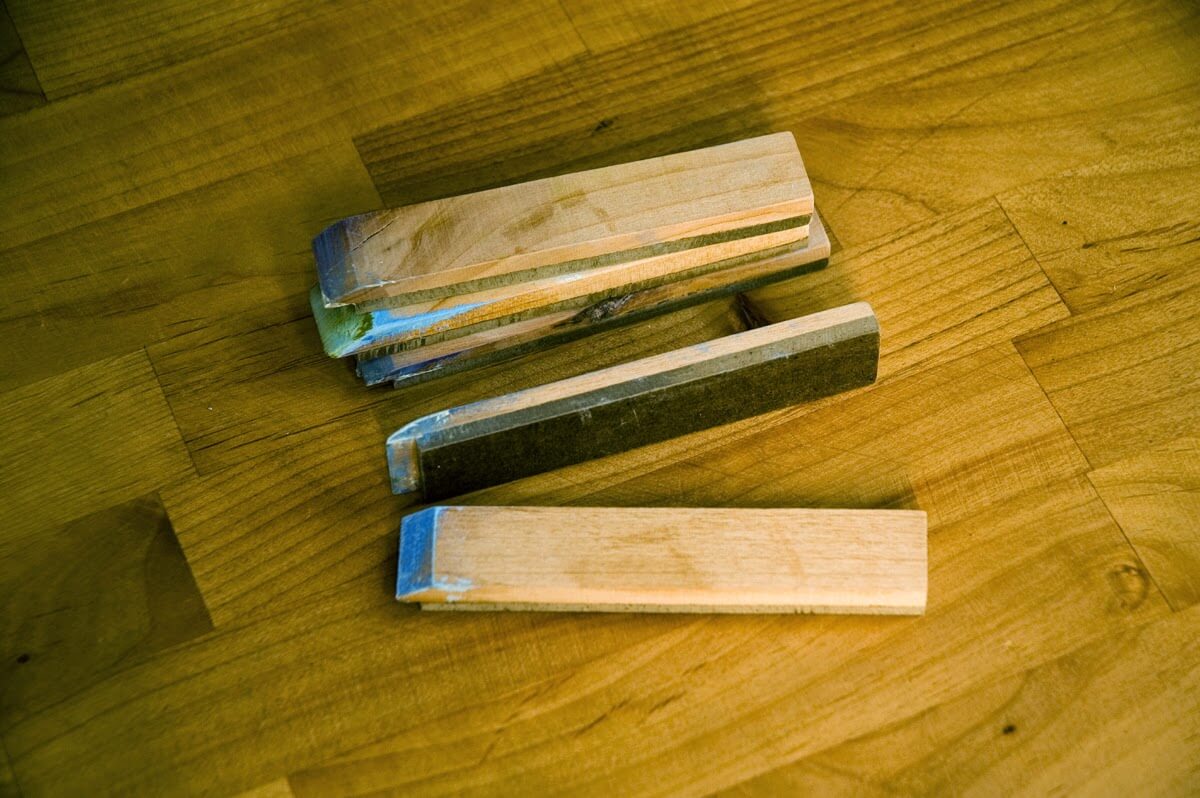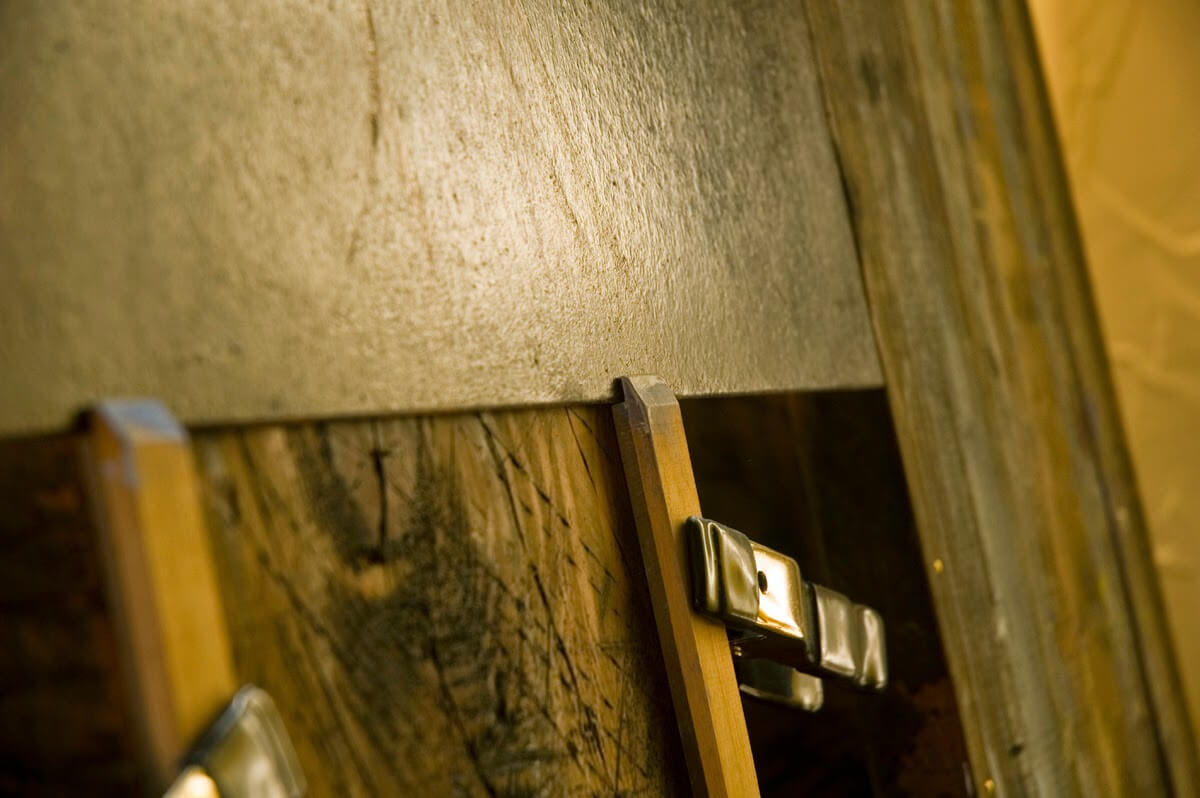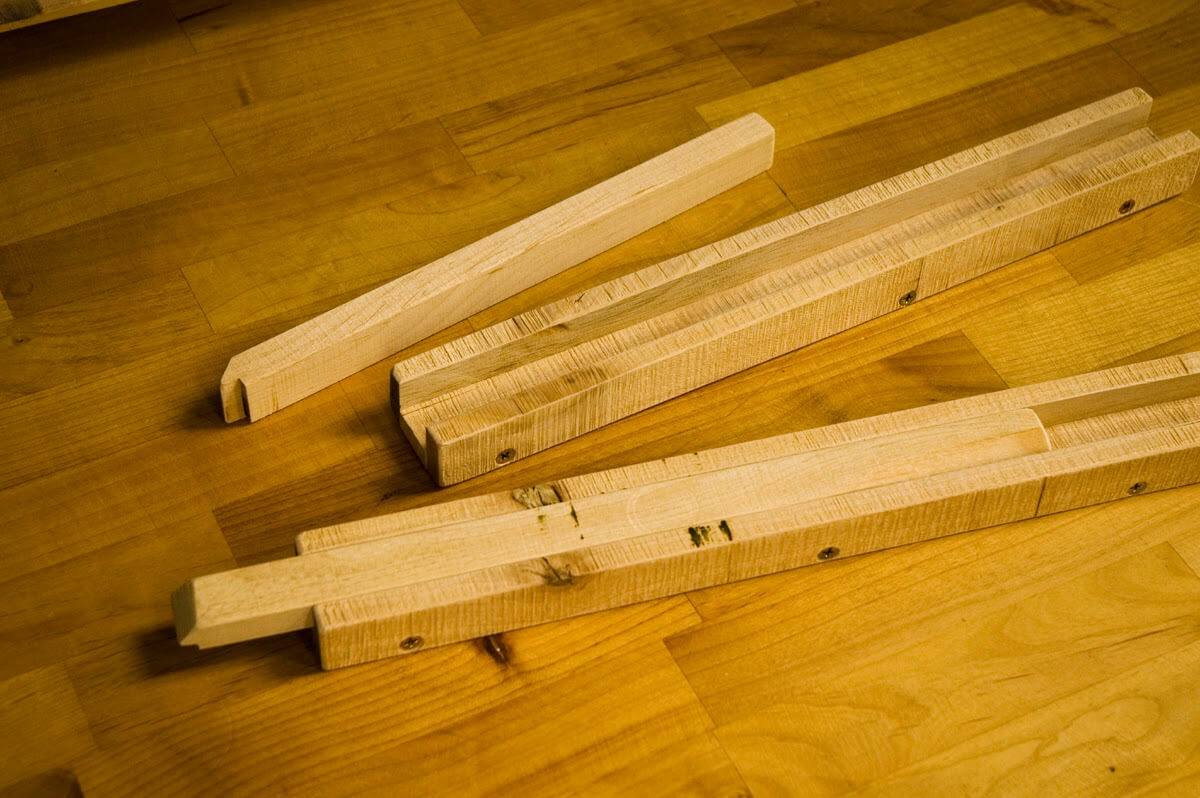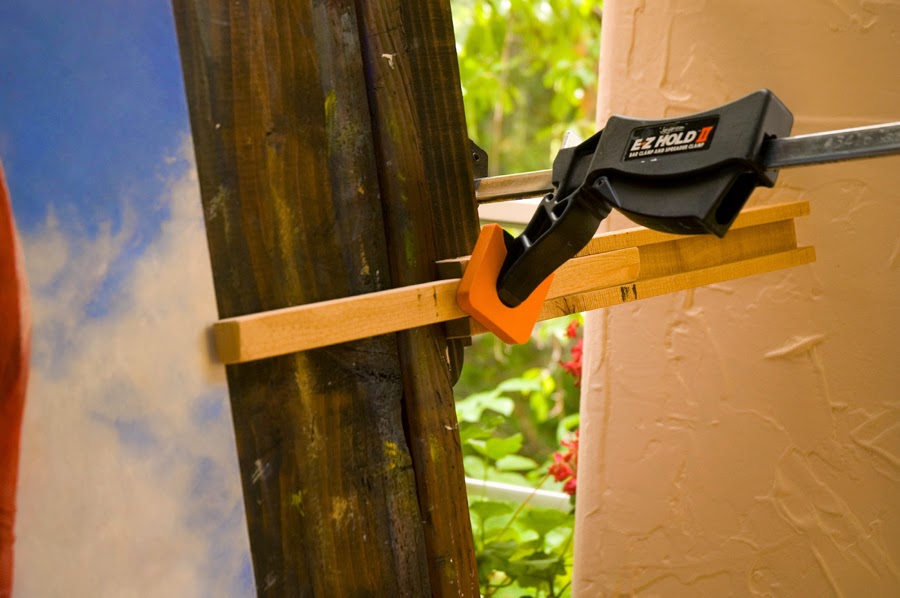"My kingdom for a clamp!"
By Al R. Young
The plight of Richard III during the Battle of Bosworth Field applies equally to the creation of original artwork (probably to the creation of anything original) when that creation occurs on the frontier of available equipment and funds. And perhaps nothing on the studio frontier--at least in my experience--is more diverse and ubiquitous in its uses than the clamp. C-clamps, bar clamps, pipe clamps, spring clamps, binder clamps, film clips, even clothespins are so important that I suspect trying to be a studio artist without them would be almost as difficult as trying to paint without brushes.
The kinds of projects a studio produces exert a profound influence on the nature of the studio that results; that is, the kind of workspace that is eventually accumulated or built up around the projects. Not every artist can or even desires to focus time and effort on creating tools and equipment. Frankly, the risk of personal hazard is often, and very justifiably, a compelling reason not to do so. Nevertheless, our circumstances over the years have drawn a boundary around making equipment and tools, as opposed to purchasing them, that takes in a fairly large do-it-yourself territory.
One of the most wonderful things about clamps is the ease with which they and the infrastructure they support can be modified or removed. In this post, we present only a simple example of our use of clamps to hold in place works-in-progress. Most of our easels are custom made and rely to one degree or another on clamps to secure either the artwork itself or the ledge (or tray) on which the artwork rests, or both.
Several years ago, a commission to paint a diptych in which the panels measured 4 ft. x 8 ft. required creation of the diptych easel, to which rigid panel-supports for the painting were secured by C-clamps. This worked well enough because the heavy panels stabilized the easel. Furthermore, the dado of the frame into which the paintings were to be mounted was deep enough to hide the footprints of the clamps holding in place the panels during painting.
Then, in 2012, the Studios was commissioned to paint a tetraptych consisting of images measuring 13.5 in. wide x 186.5 in. high. The height of these panels necessitated construction of the loft easel. Because that easel provided only a vertical backing for the very supple strips of Masonite, clamps were needed along the sides of the Masonite pieces to keep them in place.
Since their use on the tetraptych, the clamps have enjoyed constant and varied use throughout the Studios. The relatively shallow dado on the clamp-extension not only encroaches minimally on the image-area of the painting, but presents minimal obstruction to all manner of brush-wielding techniques.
During the latter part of 2013, Al embarked on another full-length portrait to be painted on a panel 35.375 in. wide x 76.4375 in. high. While the $10 easel readily accommodated this project, the suppleness of the Masonite again required clamps along the sides.
The style of clamps created for the loft easel had already inspired creation of a couple of larger-scale clamp extensions made for the $10 easel, but trying to install and remove them while using a grip-tightened bar clamp turned out to be inconvenient and actually hazardous in terms of the painting. The solution was to add a trough to the wooden part of the clamp so the trough could hold the clamp-extension in place while securing the grip-clamp.
Other ideas about the use of clamps appear in Equipment and other posts in this Newsroom.
Browse articles by year: 2025 . 2024 . 2023 . 2022 . 2021 . 2020 . 2019 . 2018 . 2017 . 2016 . 2015 . 2014 . 2013 . 2012 . 2011 . 2010 . 2009 . 2008 . 2007 . 2006 . 2005 . 2004 . 2003 . 2002 . 2001 . 2000 . 1999 . 1998 . 1997 . 1996
Browse articles by topic: Art lessons . BenHaven Archives . Blank art diaries . Fine art photography . Framing . Illustration . Inspiration and creativity . Isles of Rune . Limited Editions Collection . My Fathers Captivity . News . Novellas . Oil paintings and prints . Operations announcements . Orders and shipping . Overview . Portfolios . The Papers of Seymore Wainscott . Project commentaries . Recipes by Nancy Young . Recommended reading . Recommended viewing . Temple artworks . The Storybook Home Journal . Tips and techniques . Tools supplies and operations
Browse articles by topic: Art lessons . BenHaven Archives . Blank art diaries . Fine art photography . Framing . Illustration . Inspiration and creativity . Isles of Rune . Limited Editions Collection . My Fathers Captivity . News . Novellas . Oil paintings and prints . Operations announcements . Orders and shipping . Overview . Portfolios . The Papers of Seymore Wainscott . Project commentaries . Recipes by Nancy Young . Recommended reading . Recommended viewing . Temple artworks . The Storybook Home Journal . Tips and techniques . Tools supplies and operations



